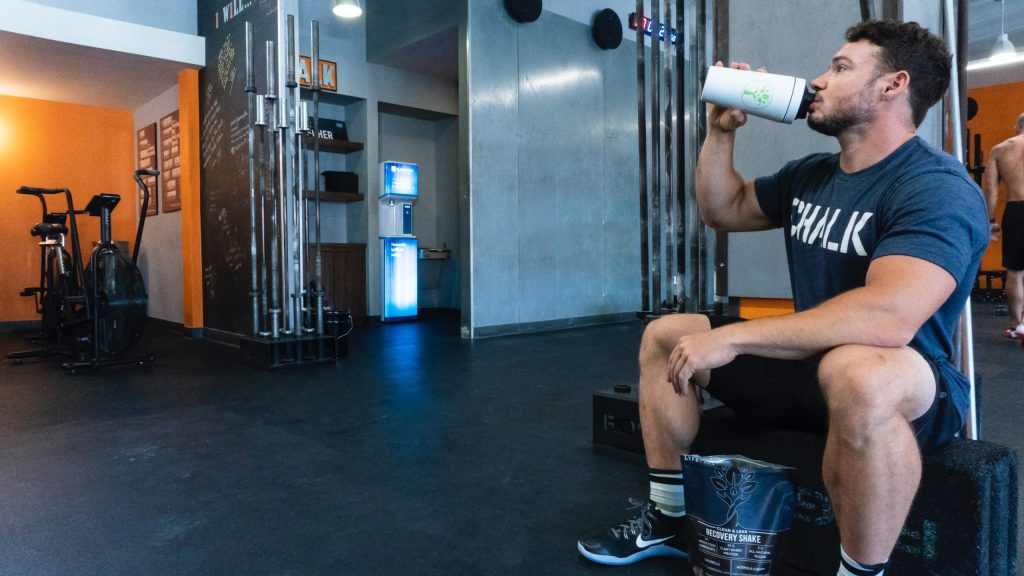The top 6 critical supplements for ultimate performance
Introduction
When it comes to all things training, there is no lifter or competitor I have trained with who has not engaged in some supplement routine. Let’s face it: it’s simply ubiquitous when it comes to lifting. A large number of sport supplements are marketed and even targeted to athletes, claiming to enhance muscular strength, power, hypertrophy, and even body composition. More specifically, the major advantages of pre-workout stimulants and supplements include increased energy and focus, enhanced upper body or lower body strength, weight loss, and fat burning capabilities.
This article will focus on the top supplements that everyone has been exposed to in some form or fashion. Many of these are supported by the prevailing scientific literature and thus improve exercise and sports performance, and most appear to be safe when ingested for short periods of time by healthy people.
Several of these products claim to enhance performance by delivering more mental focus, energy, endurance, strength, and improving blood flow. However, the question is, “what do they actually do, and how do they work? Are there risks and/or benefits?” Let’s examine this more thoroughly.
Caffeine
Make no mistake, caffeine is a powerful (1,3,7-trimethylxanthine) and the most widely consumed drug in the world (which is commonly consumed in coffee, tea, soda, and energy drinks). Its ability to increase muscular work has been evident since the early 1900s. It has also been used since the Stone Age (Escohotado 1999), and its ability to enhance muscular work was first recognized over 100 years ago (Rivers 1907).
Upon ingestion, caffeine is rapidly absorbed and increases in plasma concentrations, generally observed between 30 to 60 minutes following ingestion (Goldstein 2010). Early work reported that the variability in absorption time is dependent on the physicochemical formulation properties of the product dose (Bonati 1982). Caffeine exhibits a strong cardiovascular effect that stimulates an increase in epinephrine (adrenaline) output to a greater extent when ingested via its anhydrous formulation when compared to an equal amount of brewed or instant caffeinated coffee (McLellan 2004).
The ISSN (2017) summarized many of the effects of caffeine on exercise performance as follows:
- Caffeine is effective for enhancing sport performance in trained athletes when consumed in low-to-moderate dosages (~3-6 mg/kg/BM) and overall does not result in further enhancement in performance when consumed in higher dosages (≥ 9 mg/kg/BM).
- Caffeine exerts a greater ergogenic effect when consumed in an anhydrous state as compared to coffee.
- Caffeine supplementation is beneficial for high-intensity exercise, including team sports such as soccer and rugby, both of which are categorized by intermittent activity within a period of prolonged duration.
- Caffeine is ergogenic for sustained maximal endurance exercise and has been shown to be highly effective for time-trial performance.
- The literature is equivocal when considering the effects of caffeine supplementation on strength-power performance, and additional research in this area is warranted.
- The overall scientific literature does not support caffeine-induced diuresis during exercise, or any harmful change in fluid balance that would negatively impact performance.
- It has been shown that caffeine can enhance vigilance during bouts of extended exhaustive exercise, as well as periods of sustained sleep deprivation.
A significant increase in maximal bench press strength has been observed in resistance-trained women after caffeine ingestion (McLellan 2004). Astorino (2011) reported increases in training volume after acute caffeine consumption in the first two sets of performing the leg press to exhaustion, and knee extension/flexion (24, while Duncan (2011) reported an increase in bench press to exhaustion at 60% of 1RM. However, Hendrix (2011) found no changes in 1RM in the bench press and leg extension exercises in untrained males after consumption of 400 mg of caffeine.
Creatine
It’s almost impossible to be involved in this industry, or to even be a layperson, and not know about creatine. There are numerous individuals, however, (even those in the healthcare industry) who still believe in the misconceptions surrounding creatine. We have all encountered those who have asked if creatine is “bad.”
Creatine is synthesized from the amino acids arginine, glycine, and methionine in the human liver and pancreas. In an average adult (weighing 154 pounds), the total amount of existing creatine is 120 grams, most of which (95%) is composed of skeletal muscle. It is estimated that 65% of intracellular creatine is phosphorylated (i.e. phosphocreatine), and the remainder exists as free creatine. According to the ISSN position stand (ISSN 2017), creatine monohydrate is the most effective ergogenic nutritional supplement currently available to athletes for increasing high-intensity exercise performance and lean body mass during training. Today, several hundred peer-reviewed research studies exist that have examined the effectiveness of creatine supplementation. According to Kreider (2003), nearly 70% have reported a significant improvement in exercise performance. While it is safe to say that the remaining 30% of those studies did not show any benefit, research reports that this is likely due to the lack of an increase in skeletal muscle creatine content (Bufford 2007).
Beta-Alanine
Beta-alanine, or 3-aminopropionic acid is a naturally-occurring beta-amino acid and a component of the histidine dipeptides carnosine and anserine, as well as vitamin B5, or pantothenic acid.
There are three primary ways to produce beta-alanine:
1). the breakdown of carnosine
2). the conversion of L-alanine to pyruvate
3). through digestion
However, the most notable method of increasing beta-alanine is through supplementation. Carnosine increases muscle function and performance mainly through its ability to reduce acidity in muscles during prolonged high-intensity exercise. Carnosine is highly prevalent in skeletal muscle, primarily fast-twitch muscle fibers. During high-intensity exercise, certain metabolites accumulate that cause fatigue (e.g. hydrogen ions). As the concentration of hydrogen ions increases, pH drops and reduces muscle function and power output. Muscle carnosine concentration is also linked with having a high percentage of Type II fast-twitch muscle fibers. For this reason, you’ll find higher levels of muscle carnosine among sprinters, MMA fighters, boxers, and many combat and contact sport athletes.
According to research, beta-alanine helps to enhance performance under three conditions:
- Single bouts of high-intensity exercise lasting 1-4 minutes
- Multiple bouts of high-intensity training with short rest periods (think HIIT)
- Single bouts of high-intensity training in the presence of fatigue
Specifically, it has been shown that 28 days of beta-alanine supplementation at a dosage of 4-6.4 grams per day increases carnosine levels in muscle by approximately 60 percent (Hoffman 2008). Compared to creatine, where muscles can maximize storage capacity following a seven-day loading protocol, the upper limit to carnosine is unknown. On the other hand, strong evidence suggests that beta-alanine affects anaerobic performance, including power output and fatigue threshold. In a classic study by Hoffman et al. (2008), college football players ingested 4.5 grams of beta-alanine or placebo for 30 days. Additionally, greater training volumes were reported during all resistance training sessions for the beta-alanine group. Furthermore, feelings of fatigue were lower for the beta-alanine group versus placebo group. In another study by Hoffman and colleagues, significant changes in lean body mass, percent body fat, and strength were seen in college football players when beta-alanine and creatine supplementation were given during a 10-week resistance training program (Hoffman 2006).
Leucine
Interestingly, leucine has much greater power on stimulating protein synthesis compared to any other amino acid. One of the most researched pathways of muscle growth is called the mTOR pathway (mechanistic target of rapamycin), and leucine activates complex muscle-building pathways via mTOR. In fact, mTOR is highly sensitive to concentrations of leucine.
It is no surprise that leucine has been a name in gym circles in recent years. To better clarify the impact of essential amino acids, and in particular the impact of ingesting more (or less) leucine in comparison to the other essential amino acids, a study was completed at the University of Texas in Galveston. This study recruited young (28-30 years old) and old (66 years old) participants, and had them ingest 6.7 grams of essential amino acids dissolved in a noncaloric drink. (Katsanos 2006). In one condition, the solution contained 1.7 g of leucine (26 percent leucine which is commonly found in whey protein). The other condition provided 2.8 g of leucine, which made its leucine content 41 percent of the total amount of essential amino acids.
They found that the amount of leucine that was given to younger participants had no particular impact on protein synthesis. In other words, the changes observed in muscle protein metabolism were similar in the young participants, whether the amount of leucine was 26 percent or 41 percent.
In the young group, when both amounts of leucine were provided, significant increases in blood levels of amino acids occurred very rapidly. In fact, within 15 minutes of ingesting each solution, blood levels of the essential amino acids began to rise rapidly, and within 30 minutes of ingestion they reached their peak levels. In addition, rates of muscle protein synthesis reached similar peak levels regardless of whether the solution contained 26 or 41 percent leucine.
The older group, on the other hand, saw an increase in protein synthesis only with the 41 percent solution. This should come as no surprise, though, as previous research has demonstrated reduced muscle protein synthesis in older individuals when only small amounts of essential amino acids are ingested. Due to a possible decrease in sensitivity to leucine, individuals 65 years and older should aim to consume extra leucine to activate muscle protein synthesis.
A study published by Churchward-Venne (2014) at McMaster University in Canada assessed the impact of several different combinations of different doses of whey protein and individual amino acids on changes in muscle protein synthesis, both at rest and after a single bout of resistance exercise. Forty men with an average age of 21 were recruited and underwent resting and exercise conditions. One group ingested a 25-gram dose of whey (3 g leucine), the second group ingested just 6.25 g of whey protein (0.75 g leucine), a third group ingested 6.25 g whey supplemented with leucine to 5 g total leucine, and the fourth group ingested 6.25 g of whey protein supplemented with BCAAs to total 5 g of leucine.
The results showed that 6.25 grams of whey protein plus a high dosage of leucine (5 g) was more anabolic than the same dose of whey with less leucine (3 g). Furthermore, it was just as effective at increasing protein synthesis rates as a high-protein dose (25 g). In other words, increasing leucine levels can compensate for a suboptimal dose of whey protein. You’ll still get the same degree of protein synthesis.
Here are some supplementation strategies you can use to help you maximize the benefits of leucine.
- Consume 2.5 grams of leucine (or 5 g of total BCAAs) within 30 minutes of training to support an anabolic stimulus.
- Combine another 5 grams of leucine (or 10 g of BCAAs) in your post-workout protein shake.
- Consume 5 grams of leucine before sleep to facilitate recovery from training. As previously mentioned, adding leucine to a beverage, or compensating with increased leucine in whey protein, can be very effective for stimulating protein synthesis.
- Consuming leucine between meals is encouraged for accelerated recovery and enhanced protein synthesis. Individuals who are dieting and want to maintain lean muscle mass should consider adding a leucine supplement, which can certainly help reduce any potential catabolic effects and prevent muscle breakdown. Just 2-3 grams of leucine should do the trick.
Sodium bicarbonate
Sodium bicarbonate (also referred to as baking soda) isn’t usually the “go-to” supplement to increase performance, and it typically isn’t on the top of the list for those wanting to improve exercise capacity. However, this substance was first reported in literature in the 1930s (Denning 1931) and has been used since the 1970s. The principle mechanism of action of sodium bicarbonate is reducing the effects of acidosis. Simply, acidosis refers to an increase in acidity (usually from very high intensity exercise). By ingesting sodium bicarbonate, acidosis can ideally be decreased and is thought to prolong muscle oxygen capacity. Peart (2012) summarizes that during high intensity exercise, acid (H+) and carbon dioxide (C02) accumulate in the muscle and blood. A method for removing the acidity and C02 is to ingest bicarbonate as the acid. C02 is then removed from the lungs.
Typically, the standard doses (200–500 mg/kg) appear to benefit performance prior to short power exercises and upon exercise-induced acidosis. Benefits can be achieved with a single dose sixty to ninety minutes before exercise. However, bicarbonate supplementation should be used carefully as its use has been associated with gastrointestinal side effects (Cameron 2010) if a large dose is taken at once or if it’s consumed too quickly. Previous reports indicate that bicarbonate loading taken sixty to ninety minutes prior to exercise (or 5 grams taken twice per day for five days) has been shown to be an effective way to buffer acidity during high intensity exercise lasting one to three minutes in duration (Kraemer 1995, McLaughton 1999). This is likely to improve exercise performance in events like the 400- or 800-meter run or the 100- or 200-meter swim. Lingh (2008) concluded that sodium bicarbonate supplementation improved 200-meter freestyle performance time in elite male competitors, most likely by increasing buffering capacity.
With resistance training (which is what most of us really care about), there are limited findings. One study had subjects perform leg presses (four sets of twelve with a set to failure) and preloaded with 300 mg/kg sodium bicarbonate 105 minutes before activity. The results indicated that increases in lactate and pH occurred, but bicarbonate ingestion didn’t improve performance (Portington 1998) A similar study also failed to find a significant benefit associated with supplementation (Webster 1993). Therefore, these two studies failed to find a benefit associated with sodium bicarbonate ingestion and resistance training as a pre-workout tool.
Based on the science, although mixed results are present, sodium bicarbonate can be an effective pre-workout supplement, but it should be taken up to an hour before exercise. If taken closer to training time, there is an increased risk of gastrointestinal distress. It also seems unlikely that ingesting sodium bicarbonate would be beneficial to single bout exercise because its benefits come from acid-based recovery between bouts or repeated high intensity efforts. The dosage range of 200–300 mg/kg is probably best for usage prior to exercise, with lower doses likely to reduce stomach discomfort.
Whey Protein
Whey comes from milk, which is actually composed of two proteins: casein, which makes up approximately 80 percent of milk protein, and whey, which makes up the other 20 percent. When milk is turned into cheese, whey is separated from the solid curds and can be found in the liquid that is left behind.
Many refer to whey as a “fast-acting” protein, which means that the body breaks it down and absorbs it relatively quickly. Whey is split into several forms via isolates, concentrates and hydrolysates. Fundamentally, the differences lie within the processing method. Whey isolates are a very high-quality protein. They are quickly absorbed by the body and contain 90 percent or more protein by weight, very little fat and almost zero lactose. Whey isolates are considered more specific to the protein itself, compared to whey concentrates, which contain larger amounts of other materials. Whey concentrate contains between 25 percent and 89 percent protein by weight depending upon the product.
A well-known study published in the Journal of Applied Physiology showed that whey hydrolysate supplementation increased muscle protein synthesis to a greater extent than soy and casein — both during rest and after resistance training in healthy young subjects within the first three hours post-ingestion. While at rest, whey protein was shown to be 93 percent and 18 percent more effective than casein and soy, and whey protein was 122 percent and 31 percent more effective than casein and soy post-exercise. However, due to the large differences observed between whey and the other proteins, it’s likely that whey protein isolate (WPI) or whey protein concentrate (WPC) would have yielded similar results as the whey protein hydrolysate used in the experiment. Another study found that hydrolyzed whey isolate can increase actual gains in lean mass and strength over 10 weeks compared with casein. It seems that the various whey proteins are the superior choice post-workout for those seeking muscular gains.
Whey protein supplementation combined with resistance exercise appears to offer up greater gains in muscle strength and muscle mass over just resistance exercise alone. A study published in the International Journal of Sport Nutrition and Exercise Metabolism concluded that those who supplemented with whey protein during resistance training had an almost 5-percent (or 5.5-pound) greater increase in lean tissue mass compared to those who didn’t supplement (Candow 2006).
And compared to other forms of protein, like casein and soy, whey reigns superior when it comes to greater improvements in muscle strength and size. Following a 10-week intense training program, resistance-trained men who supplemented with whey protein isolate had significantly greater gains in strength and lean body mass, and a decrease in body fat, compared to the group that supplemented with casein (Cribb 2006).
Happy Swolementation!
References
- Escohotado, A and Symington, K. A Brief History of Drugs: From the Stone Age to the Stoned Age. South Paris, ME: Park Street Press, 1999.
- Rivers, WHR and Webber, HN. The action of caffeine on the capacity for muscular work. J Physiol 36: 33–47, 1907.
- Goldstein ER, Ziegenfuss T, Kalman D, Kreider R, Campbell B, Wilborn C, Taylor L, Willoughby D, Stout J, Graves BS, et al.: International society of sports nutrition position stand: caffeine and performance. J Int Soc Sports Nutr 2010, 7:5.
- Bonati M, Latini R, Galletti F, Young JF, Tognoni G, Garattini S: Caffeine disposition after oral doses. Clin Pharmacol Ther 1982, 32:98-106
- McLellan TM, Bell DG: The impact of prior coffee consumption on the subsequent ergogenic effect of anhydrous caffeine. Int J Sport Nutr Exerc Metab 2004, 14:698-708
- Astorino TA, Martin BJ, Schachsiek L,Wong K, and Ng K. Minimal effect of acute caffeine ingestion on intense resistance training performance. J Strength Cond Res 25: 1752–1758, 2011.
- Astorino TA and Roberson DW. Efficacy of acute caffeine ingestion for short-term high intensity exercise: A systematic review. J Strength Cond Res 24: 257–265, 2010.
- Duncan MJ and Oxford SW. The effect of caffeine ingestion on mood state and bench press performance to failure. J Strength Cond Res 25: 178–185, 2011.
- Hendrix CR, Housh TJ, Miekle M, Zuniga JM, Camic CL, Johnson GO, Schmidt RJ, and Housh DJ. Acute effects of caffeine containing supplement on bench press and leg extension strength and time to exhaustion during cycle ergometry. J Strength Cond Res 24: 859–865, 2010.
- International society of sports nutrition position stand: nutrient timing: Journal of the International Society of Sports Nutrition. August 2017. Chad M. Kerksick, Shawn Arent, Brad J. Schoenfeld, Jeffrey R. Stout, Bill Campbell, Colin D. Wilborn, Lem Taylor, Doug Kalman, Abbie E. Smith-Ryan, Richard B. Kreider, Darryn Willoughby, Paul J. Arciero, Trisha A. VanDusseldorp, Michael J. Ormsbee, Robert Wildman, Mike Greenwood, Tim N. Ziegenfuss, Alan A. Aragon and Jose Antonio.
- Kreider RB. Effects Of Creatine Supplementation On Performance And Training Adaptations. Mol Cell Biochem. 2003;244(1-2):89–94.
- Buford TW, Kreider RB, Stout JR, Greenwood M, Campbell B, Spano M, Ziegenfuss T, Lopez H, Landis J, Antonio J. International Society Of Sports Nutrition Position Stand: Creatine Supplementation And Exercise. J Int Soc Sports Nutr. 2007;4:6.
- Hoffman, J. R., Ratamess, N. A., Faigenbaum, A. D., Ross, R., Kang, J., Stout, J. R., & Wise, J. A. (2008). Short-durationBeta-alanine supplementation increases training volume and reduces subjective feelings of fatigue in college football players. Nutrition Research, 28(1), 31-35.
- Hoffman, J., Ratamess, N., Kang, J., Mangine, G., Faigenbaum, A., & Stout, J. (2006). Effect of creatine and ß-alanine supplementation on performance and endocrine responses in strength/power athletes. International Journal of Sport Nutrition and Exercise Metabolism, 16, 430-446.
- Katsanos CS, Kobayashi H, Sheffield-Moore M, Aarsland A, Wolfe RR. A high proportion of leucine is required for optimal stimulation of the rate of muscle protein synthesis by essential amino acids in the elderly. Am J Physiol Endocrinol Metab. 2006;291(2):E381-387.
- Churchward-Venne TA, Breen L, Di Donato DM, et al. Leucine supplementation of a low-protein mixed macronutrient beverage enhances myofibrillar protein synthesis in young men: a double-blind, randomized trial.Am J Clin Nutr. 2014;99(2):276-286.
- Portington KJ, et al (1998) Effect of induced alkalosis on exhaustive leg press performance. Med Sci Sports Exerc.
- Webster MJ, et al (1999) Effect of sodium bicarbonate ingestion on exhaustive resistance exercise performance. Med Sci Sports Exerc.
- Candow, D. G., Burke, N. C., Smith-Palmer, T., & Burke, D. G. (2006). Effect of whey and soy protein supplementation combined with resistance training in young adults. International Journal of Sport Nutrition and Exercise Metabolism, 16(3), 233-244.
- Cribb, P. J., Williams, A. D., Carey, M. F., & Hayes, A. (2006). The effect of whey isolate and resistance training on strength, body composition, and plasma glutamine. International Journal of Sport Nutrition and Exercise Metabolism, 16(5), 494-509.







